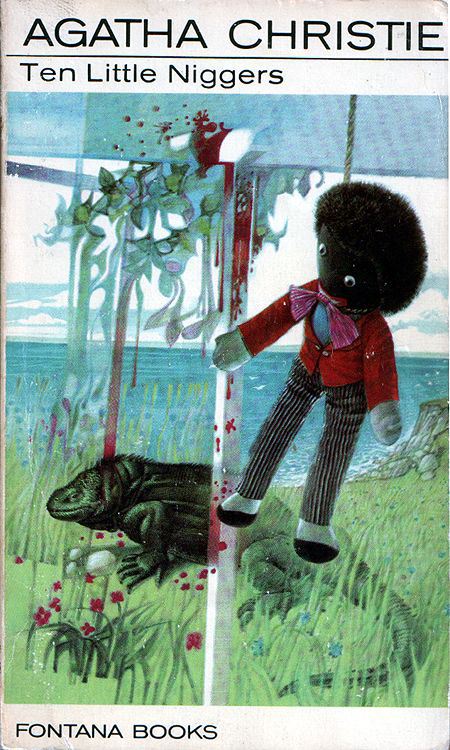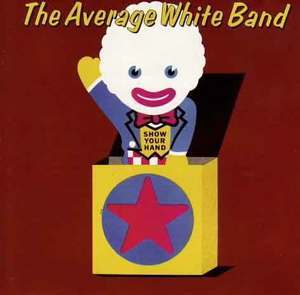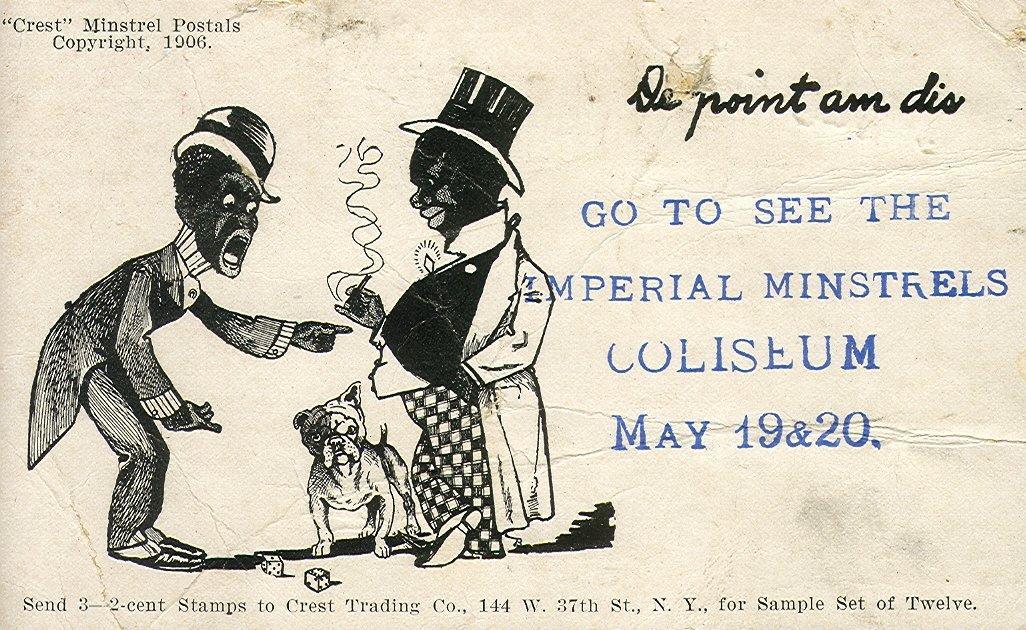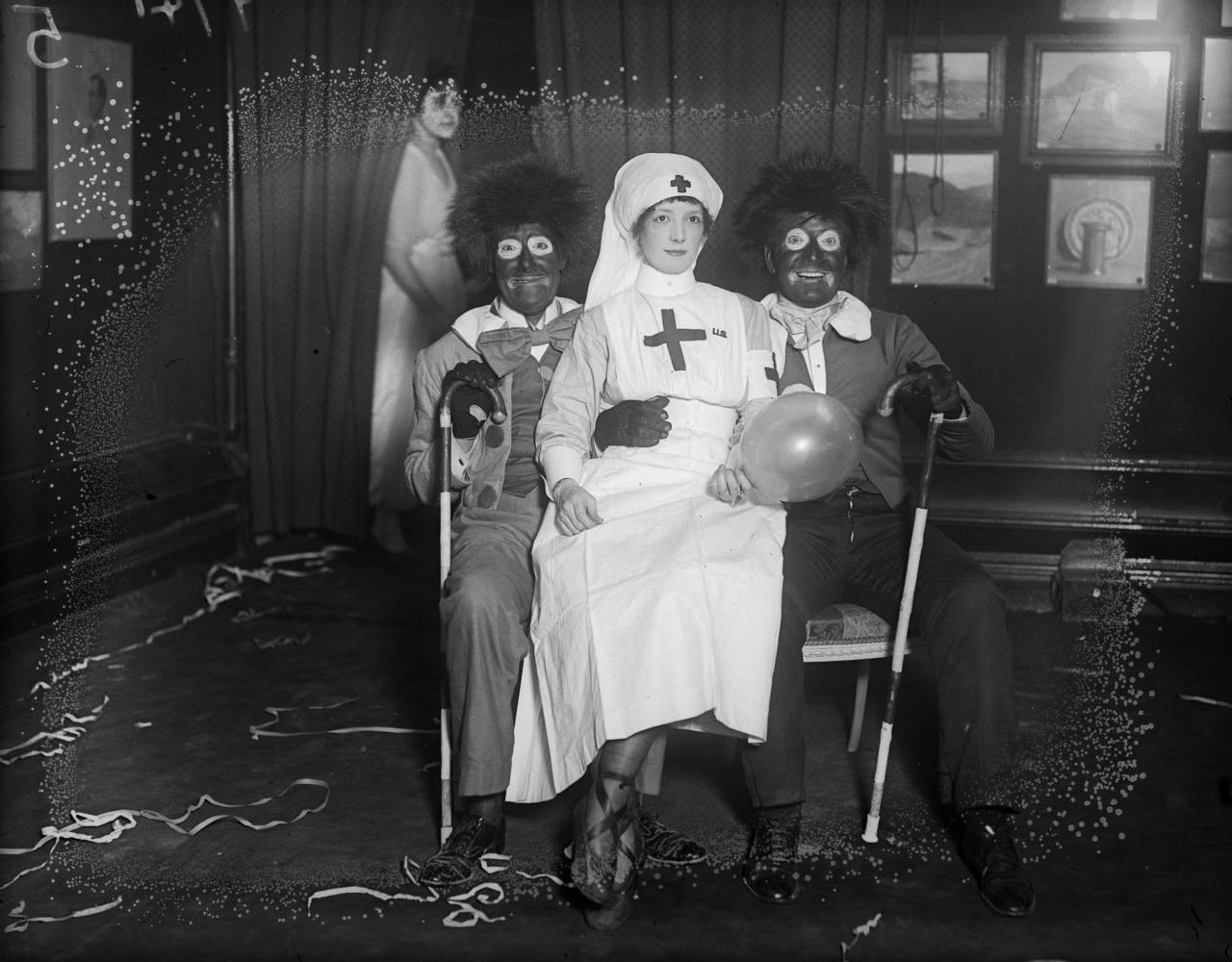
January 1919: Fancy dress for an ‘American’ night at Princes; a woman dressed as a nurse and two men in ‘golliwog’ outfits which are based on the appearance of a gallant hero in a series of children’s books in verse by US writer Bertha Upton. (Photo by A. R. Coster/Topical Press Agency/Getty Images)
CAROL Thatcher’s “golliwog” remark has put the issue into the news for the first time in forty years.
I’m sorry, I’ll start again.
Carol Thatcher’s “golliwog” remark has put the issue into the news for the first time in four months. As recently as October 2008 the Enid Blyton shop was under attack for stocking gollies. And in four months’ time another golly non-story will probably come along
Although I find it amazing that the views of a woman who dresses like a Jimmy Savile impersonator are taken seriously enough to launch a national debate, I acknowledge that there is a serious issue at stake regarding banning/free speech etc.
What I find incomprehensible is the endless argument about the golliwogs themselves.
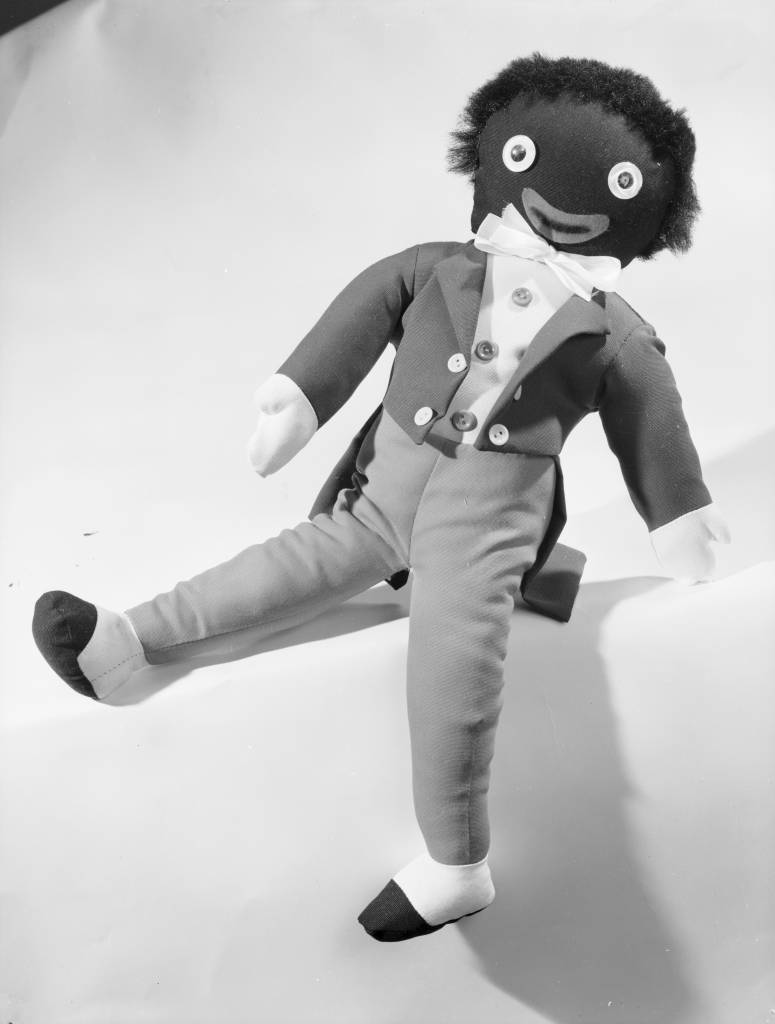
20th February 1962: A black-faced brightly dressed soft doll with fuzzy hair, named ‘Golliwog’ after a character in a book by American writer Florence Kate Upton. His name has since been shortened to Golly, thus removing the offensive term ‘wog’. (Photo by Chaloner Woods/Getty Images)
The “respectable’ argument put forward in defence of golliwogs is that they are dolls, not people, and therefore not racist.
(The racist version would be that they are friendly little fellows who bear no relation to the dark menace that haunts our streets.)
Another point that’s often made is that children think of them as dolls and are completely unaware of their controversial nature, so what’s the harm?
Today’s “gollies” as they are now known are indeed friendly little fellows, and are unlikely to be taken as anything other than toys by British children in the 21st century.
But what is strange is why anyone tries to deny the racial connection, which well documented as well as being completely obvious to anyone with half a brain.
For the record he original Golliwog (spelt Golliwogg) was based on a “Negro minstrel doll” and appeared in a book by Florence Kate Upton in 1895. He is described as “a horrid sight, the blackest gnome”. Nevertheless, he is “lovable” and basically benign.
Half a century later, Enid Blyton’s Gollywog books appeared, relating the adventures of three little fellows called Golly, Woggy and Nigger, who liked nothing better than to stride along, in Blyton’s own words, “arm-in-arm, singing merrily their favourite song – which, as you may guess, was Ten Little Nigger Boys”.
Hmm. Then there were her Noddy books, in which they feature once more. In one incident, Noddy is attacked by golliwogs, who steal his car and leave him stranded.
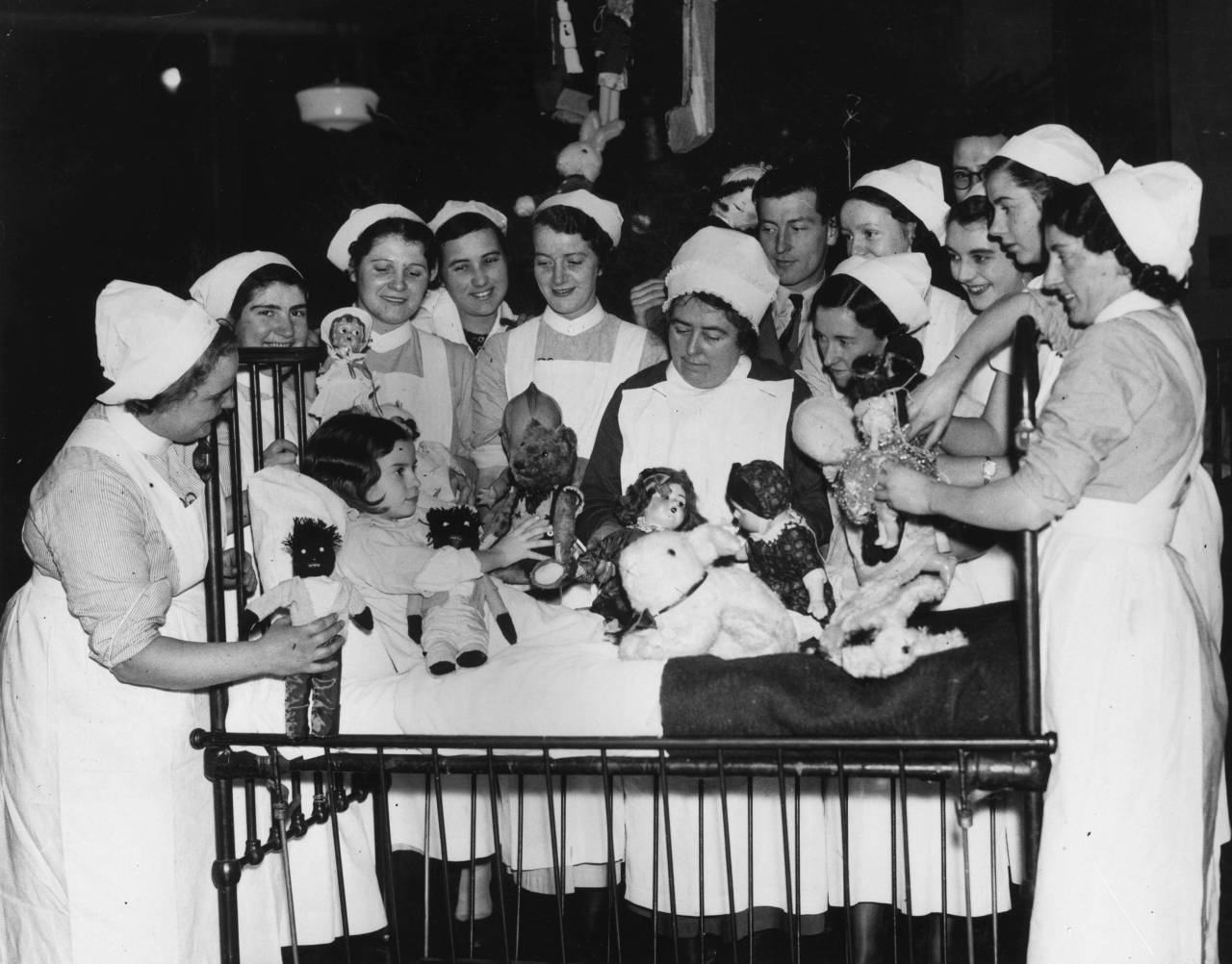
21st December 1937: Nurses at the Royal Infirmary in Cardiff’s children’s ward shower a young patient with toys for Christmas. (Photo by Fox Photos/Getty Images)
The publishers of Agatha Christie’s 1939 novel Ten Little Niggers made the symbolic connection completely unambiguous. The cover showed a lynched golliwog hanging from a tree.
The Enid Blyton quote came from The Three Golliwogs, which was still being reprinted in its original form in 1968. Later versions changed some of the more sensitive parts.
By this time golliwogs were generally referred to as a “gollies”, and the gollies most likely to spring too mind were the ones on the Robertson’s jam label, with its vouchers for golly badges. These were more cartoon-like and less sinister looking.
All the same, even “golly” was still a controversial figure. The Average White Band were a Scottish soul outfit whose singer had a ginger afro. When they started, the logo on their drum kit (and the cover of their first album) was a white golly very like the Robertson’s version. This image, like their name, was obviously intended as a droll comment on the fact that they were a bunch of pasty-faced Jocks playing black music. But it’s interesting to note that by the time the band had broken through in America, they had replaced the golly with a new logo. (This featured the initials AWB in the shape of a woman’s bottom, and the irony is that this too would probably be considered offensive nowadays – but that’s another story…)
So here we are in 2009, and the “Negro minstrel doll” is still with us. Some people want him banned, others want him celebrated.
I don’t want him banned, any more than I want to ban weirdos from dressing up in Nazi uniforms and attending Second World War reenactment weekends in Kent.
Better to leave the golly fans to live in their 1950s fantasy world, surrounded by as many rag dolls as they like, while the rest of the world concentrates on more important issues.
Like Peaches Geldoff’s marriage and Wayne Rooney’s food vouchers.
For more gollies see www.golliwogg.co.uk
Would you like to support Flashbak?
Please consider making a donation to our site. We don't want to rely on ads to bring you the best of visual culture. You can also support us by signing up to our Mailing List. And you can also follow us on Facebook, Instagram and Twitter. For great art and culture delivered to your door, visit our shop.

